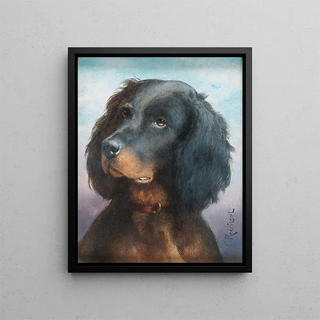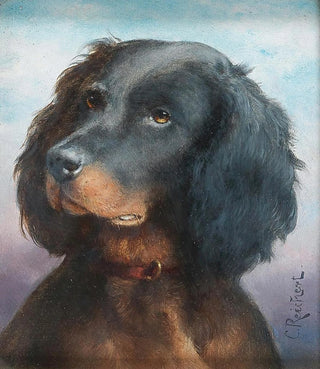Art print | A questioning look - Carl Reichert


View from behind

Frame (optional)
In the vast panorama of art history, some artworks manage to transcend time and capture the very essence of humanity. "Un regard interrogateur" by Carl Reichert is one of these memorable creations. This painting, imbued with mystery and depth, draws us into a silent dialogue between the viewer and the subject depicted. The piece, through its piercing gaze and enigmatic expression, provokes reflections on the human condition, introspection, and the search for meaning. When contemplating this work, one cannot help but wonder what the character is thinking—an inquiry that resonates beyond the centuries.
Style and uniqueness of the work
The originality of "Un regard interrogateur" lies in how Reichert manages to fuse realism and symbolism. Every detail, every nuance of color, is carefully crafted to evoke an atmosphere charged with emotion. The artist employs light and shadow techniques that bring the subject to life, creating a three-dimensionality that makes the work almost tangible. The face of the protagonist, with its intense gaze, becomes the focal point of the composition, captivating the viewer's attention and inviting them to delve into a world of reflections and questions. This stylistic choice, both delicate and powerful, demonstrates Reichert's technical mastery and his ability to convey complex feelings through his art.
The artist and his influence
Carl Reichert, 19th-century Austrian artist, left his mark on his era with his innovative approach and passion for detail. Trained in the most prestigious art academies, he established himself as a master of portraiture and genre painting. His work is often characterized by meticulous observation of human nature, a capacity to grasp the emotions and thoughts of his subjects. Reichert's influence extends well beyond his own production, inspiring many contemporary and future artists who see in him a pioneer of realism. By integrating psychological elements into his portraits, he paved the way for a new way of conceptualizing art, where emotion and reflection occupy a central place.
A wall decoration

Matte finish

View from behind

Frame (optional)
In the vast panorama of art history, some artworks manage to transcend time and capture the very essence of humanity. "Un regard interrogateur" by Carl Reichert is one of these memorable creations. This painting, imbued with mystery and depth, draws us into a silent dialogue between the viewer and the subject depicted. The piece, through its piercing gaze and enigmatic expression, provokes reflections on the human condition, introspection, and the search for meaning. When contemplating this work, one cannot help but wonder what the character is thinking—an inquiry that resonates beyond the centuries.
Style and uniqueness of the work
The originality of "Un regard interrogateur" lies in how Reichert manages to fuse realism and symbolism. Every detail, every nuance of color, is carefully crafted to evoke an atmosphere charged with emotion. The artist employs light and shadow techniques that bring the subject to life, creating a three-dimensionality that makes the work almost tangible. The face of the protagonist, with its intense gaze, becomes the focal point of the composition, captivating the viewer's attention and inviting them to delve into a world of reflections and questions. This stylistic choice, both delicate and powerful, demonstrates Reichert's technical mastery and his ability to convey complex feelings through his art.
The artist and his influence
Carl Reichert, 19th-century Austrian artist, left his mark on his era with his innovative approach and passion for detail. Trained in the most prestigious art academies, he established himself as a master of portraiture and genre painting. His work is often characterized by meticulous observation of human nature, a capacity to grasp the emotions and thoughts of his subjects. Reichert's influence extends well beyond his own production, inspiring many contemporary and future artists who see in him a pioneer of realism. By integrating psychological elements into his portraits, he paved the way for a new way of conceptualizing art, where emotion and reflection occupy a central place.
A wall decoration






